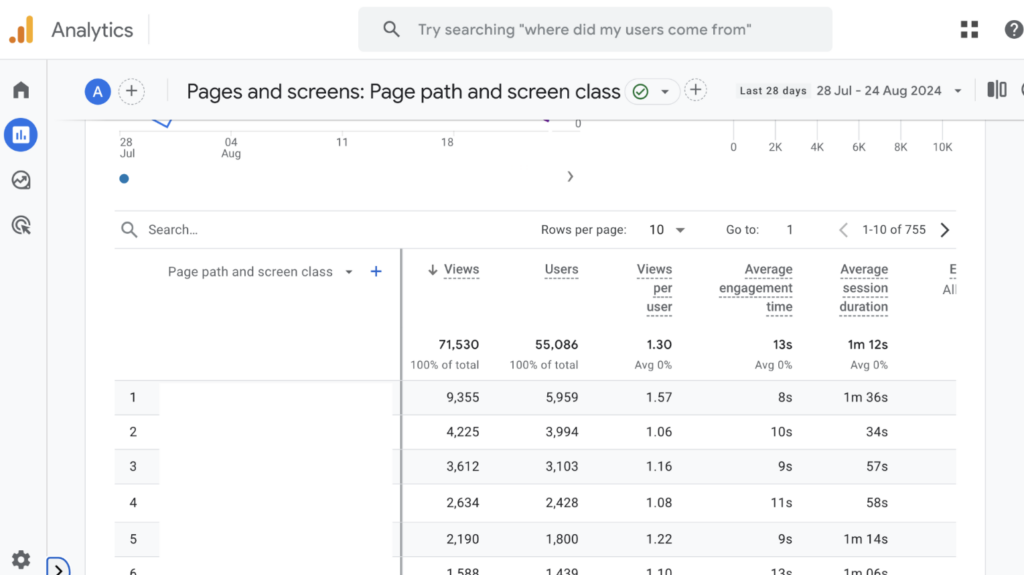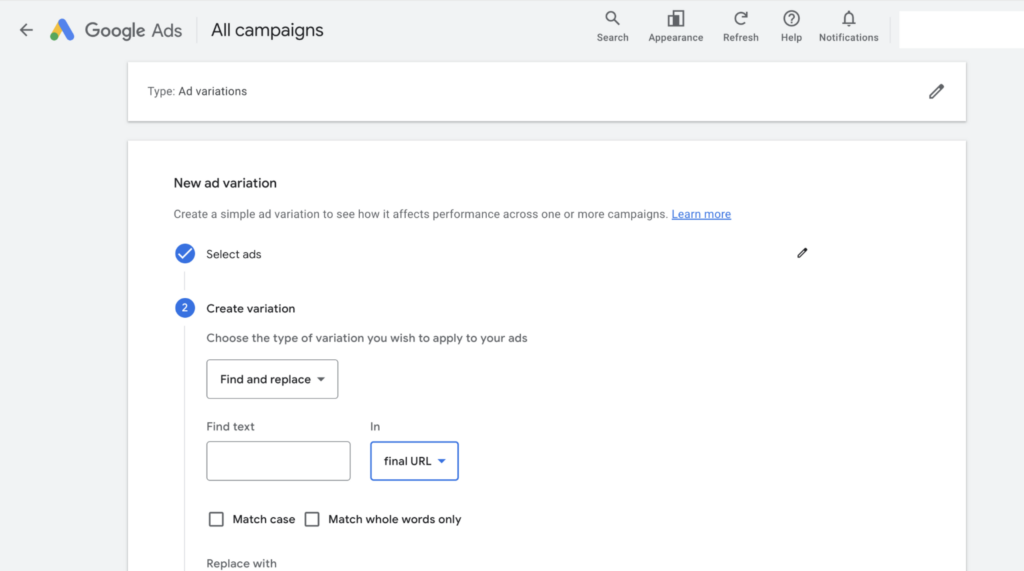Your PPC landing pages could make or break your campaigns. That’s because even if you have the most perfectly created PPC campaign, if you are sending people to a badly designed landing page, which has terrible UX or poor quality content, they aren’t going to convert.
With the post-click experience being just as important as your campaigns if you really want to see conversions rolling in, now is the time to start optimising your PPC landing pages. Here is how you’re going to do it.
1. Research
Before you can start optimising your existing PPC landing pages you need to spend some time working out what needs to be changed, why it needs to be changed and how it can be changed. To do this, you should conduct both qualitative and quantitative research.
Qualitative research – Here you will be gathering ‘non-numerical’ research on landing pages, where you are recording how you think they look and how they make you feel. This is a very subjective way of conducting research, as there is no wrong or right answer. However it is beneficial for building inspiration, especially as you can conduct this type of research on your competitors’ landing pages as well as your own.
You may look at your own landing page and feel the colours are too bright which you feel is too distracting to the visitor. In comparison, you may inspect a competitor’s landing page and notice they use a more muted colour palette which is more pleasing on the eye. You may therefore want to consider implementing a muted version of your own colour palette on your new landing page.
Remember that when looking at what your competitors are doing you are looking for inspiration. You are not looking to create a carbon copy of their PPC landing pages!
Quantitative research – Due to the subjective nature of qualitative research, you will also want to back it up with some qualitative research, where you look at measurable, numerical based metrics. Your best place to get this type of information will be via the analytics tool you use for your landing page, but you may also want to consider employing a tool which offers heatmaps and session recordings such as Microsoft Clarity.

Above: An example of the type of page information which can be found in Google Analytics 4
This type of research will help you to identify areas which need improving, which may not be immediately apparent just by looking at the page. It leans more towards how people are using your PPC landing page and what they are engaging with.
For example: When looking at your analytics, you see that 95% of people who start to fill out your enquiry form do not complete it. This could indicate that you need to work on your form fields, to ensure that you are not presenting too much of an obstacle to potential customers either by asking too many questions, or asking for too much detailed information at such an early stage. You therefore might want to consider rewording your questions and cutting down the fields to an absolute minimum.
Qualitative research is a fantastic way to get a clear, unbiased view of what is working and what is not. Along with your qualitative research, it should help you to work on thoughts and ideas as to what you would like your new PPC landing page to include, how it should look and how it should make visitors feel.
Get Stakeholder Buy-In
As is the case for most PPC Marketers, if you don’t have the buy-in to update your current landing pages from the relevant stakeholders, then you’re not going to get very far. This is even more applicable if you are agency side and trying to convince your clients that their landing pages aren’t up to scratch…
This is because unless you’re multi disciplined then you’re more than likely going to need some support or resources for aspects of this project, such as writing the new landing page content or the actual development of the page. It is therefore helpful to have the relevant stakeholders on board as soon as possible.
The best way to get your stakeholders to buy in is to communicate the importance of landing page optimisation, in a format which most resonates with them.
For example: If you are speaking to the Head of Marketing, then you may be able to just give them cold hard facts and stats about your existing pages performance. Whereas if you are speaking to a small business owner who has little digital experience, you may find it more beneficial to visually show them what needs to be improved along with examples of their competitors.
You may also wish to share the entirety of your research work, to provide further evidence and support for the need to work on new PPC landing pages. This will also demonstrate that you are making these recommendations based on research, and not personal opinion alone.
However, you should be prepared for potential pushback from stakeholders, especially those who were involved with the creation of the existing website or PPC landing pages. This project is all about teamwork, so word your criticisms carefully and be open to hear their opinions and thoughts on the importance of this project. You might be surprised at the thoughts and ideas other people may have.
Create the PPC Landing Pages
Part 1 – The first part of creating your landing page is to work out how you want it to look. To do this, you are going to take your research and build a wireframe, showing what content you want to include and where you want it to sit.
For example, if during your research you found people weren’t scrolling to the bottom of the page where the enquiry form is, in your wireframe, you could move the form higher up the page to make it more visible.
A wireframe is helpful to provide whoever is creating the page with guidance on how you envision it looking, while giving them the creative freedom to make it work visually. If you can, try doing this via a free online wireframe building tool which will allow you to add notes and annotations. Even if it means going old school and sketching it out with pen and paper, take your time and implement as much of what you’ve learned as possible into the design.

Above: An example of using a tool like Figma to produce landing page wireframes
Part 2 – The next step is to work out what you want to say on your landing page and how to do so in an informative and persuasive manner.
This is always a great point to lean onto the content specialists, who can best advise on how to get your message across to your target audience. This is not to say that you can’t have a hand in the content creation, but website copywriting in a specific skill and writing the actual copy for the new PPC landing page may be out of your wheelhouse.
If you are going to be responsible for writing the content yourself, then remember that your PPC landing page should be concise. Try to avoid writing long winded paragraphs and overly complex segments to ensure the page’s content gets straight to the point.
Step 3 – The final step in the creation of your new PPC landing page is to hand your wireframe and content over to the relevant website specialist and let them work their magic.
Try to avoid micromanaging this stage of the process, and instead schedule regular check-ins where you can see how things are progressing and allow them to ask you any questions they may have.
Launch
Now it’s time to get excited because your new PPC landing page is ready to launch!
To play it safe, you’re more than likely going to want to A/B test your new landing page against your existing landing page, so you can see how their performance compares. Thankfully platforms like Google Ads and Microsoft Advertising make this really easy to do with their ‘Experiments’ tool. Using these tools you can create a new ad variation with the new landing page as the final URL, and then split your traffic evenly to see how it compares to your old landing page.

Above: A screenshot of the ‘Experiment’ tool in Google Ads
During this process it is important to ensure you are closely monitoring the performance of your new landing page, for any unexpected technical issues which may (but hopefully won’t) occur.
By the end of your experimentation period, you should have a clear picture as to whether or not you want to switch over to your new landing pages, or stick with your existing ones. In the unlikely event that you aren’t happy with the performance of your new landing page, or if the results are too tight to see a clear winner, then there is no harm in holding off launching your new landing page until you are happy with it. You can keep working on them until you are confident in making them your new default PPC landing page.
5. Further optimisations
Now for some great news… the work never ends!
Just like you do with your campaigns, you will need to continuously monitor and optimise your new PPC landing pages to ensure that they are as effective as possible.
There will always be small tweaks and improvements you can make to your page, and to identify these opportunities you should continue to implement the same kind of tough self reflection you used during the research stage. There may also be features or content which you didn’t have the resources to include in version 1 of your landing page, which you may want to consider putting your efforts into creating.
You wouldn’t set and forget a campaign, so don’t do the same with your PPC landing pages!
Summary
By sending your PPC traffic to pages which have had its content, design and usability optimised, you can be confident your post-click experience is as strong as your campaign. In turn, your campaigns should see stronger performance as visitors have a high-quality landing page experience which you can be proud of.




